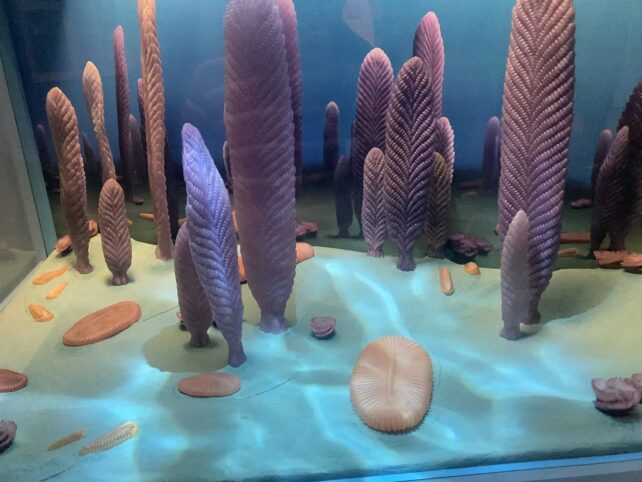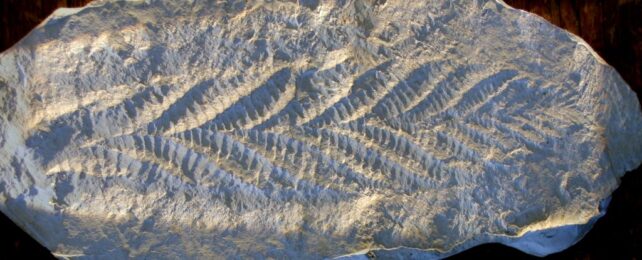In 1956, a teenage girl by the name of Tina Negus was summering in the United Kingdom's Charnwood Forest with her family, when she noticed a curious imprint on an overhanging rock face.
It looked like a fern. But as a budding geologist, Negus knew these 600 million year old rocks were too old to host such a plant. According to the established fossil record, the first complex species of flora wouldn't appear for at least another sixty million years, following the event known as the Cambrian explosion.
Sometimes called the biological big bang, the 'explosion's' abrupt burst in biodiversity was the most vexing dilemma facing Charles Darwin's theory of evolution. In his famous book, On the Origin of Species, Darwin could not find a satisfactory answer to two nagging questions: Where did all this diversity of life suddenly come from? And how did it evolve so quickly?
When Negus returned to school, she showed a pencil rubbing of her 'fern' discovery to her geography teacher. But he didn't believe her.
A year later, in 1957, three teenage boys were playing near the same rock face when they, too, noticed the same fossil. One of these teens, fifteen-year-old Roger Mason, took a pencil rubbing of the impression so that his father could pass along the design to a local university lecturer.
It took a bit of convincing, but after seeing the fossil with his own eyes, the geologist Trevor Ford confirmed that this was, indeed, a Precambrian fossil of a plant, which probably once lived on the seafloor.
He named the tubular, frond-shaped lifeform Charnia masoni after Mason.
Thanks to the discovery of Charnia, as well as improved dating techniques, paleontologists around the world were finally able to look at old fossils with new eyes. Lifeforms that were once assumed to live in the Cambrian were now turning out to be much older.
A few months after Ford published his findings, for instance, scientists in Australia published a discovery of another Charnia frond from the Precambrian.
Later, Precambrian Charnia were also found in Russia and Canada.

The fossil at Charnwood clearly wasn't a fluke. As evidence of complex life prior to the Cambrian explosion, it was everything Darwin and his successors had been searching for.
While the discovery was causing a stir in the scientific community, Negus was unaware of the impact her curious fern fossil was having. Only in 1961 did she finally learn what happened to her fossil and how influential it had been.
In 2004, she saw an interview with Roger Mason where he discussed his story of the fossil's discovery. When she reached out, he replied immediately. In 2007, Negus was invited to celebrate the 50th anniversary of the plant's identification, where she was finally included as a co-discoverer.
Like Negus, it turns out that several other people had noticed similar fossils in the past, although they had been ignored by the scientific establishment.
Way back in 1848, for instance, some naturalists had already identified macrofossils in Charnwood Forest and recognized them as possible Precambrian life forms.
This means that the answer to Darwin's dilemma existed even before he outright voiced his confusion in 1859.
Today, scientists have found a variety of Precambrian life forms in England, Australia, North America, Greenland, South Africa, parts of Asia, and Russia.
It is now clear that complex plants once flourished before the Cambrian explosion. And yet it's still unknown why diversity suddenly exploded more than 500 million years ago.
Going forward it might be wise to view new discoveries from the Precambrian and the Cambrian with an open mind.
Clearly, the innocent eyes of children can sometimes see possibilities that even the most learned scientists cannot.
